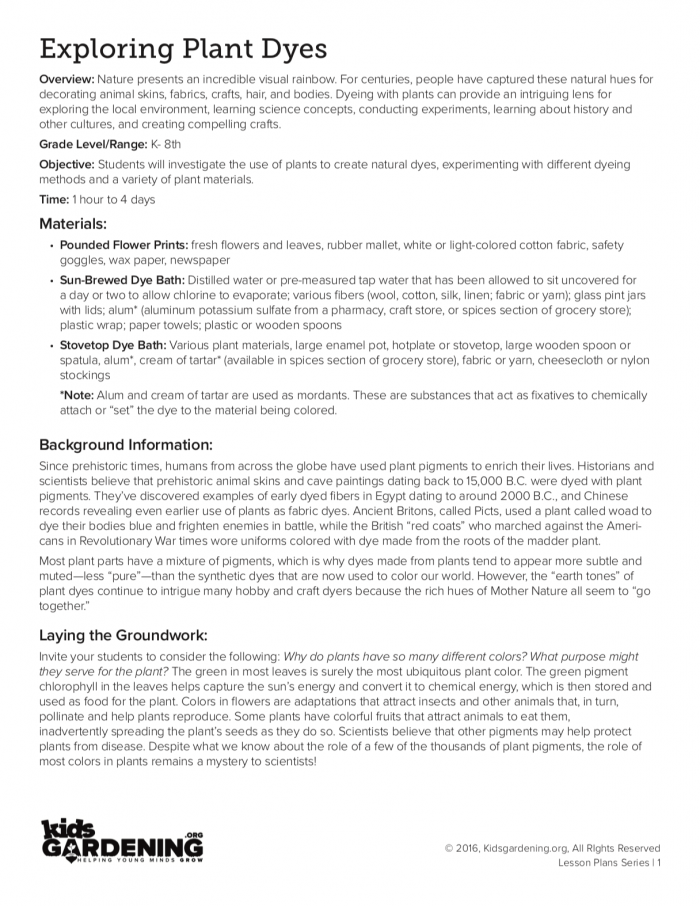Type: Activity
Subject: Fine Arts, Science, Social Studies
Theme: Cultural/Indigenous Learning, Environmental Stewardship
Nature presents an incredible visual rainbow. For centuries, people have captured these natural hues for decorating animal skins, fabrics, crafts, hair, and bodies. Dyeing with plants can provide an intriguing lens for exploring the local environment, learning science concepts, conducting experiments, learning about history and other cultures, and creating compelling crafts.
Students will investigate the use of plants to create natural dyes, experimenting with different dyeingmethods and a variety of plant materials.
Background: Since prehistoric times, humans from across the globe have used plant pigments to enrich their lives. Historians and scientists believe that prehistoric animal skins and cave paintings dating back to 15,000 B.C. were dyed with plant pigments. They’ve discovered examples of early dyed fibers in Egypt dating to around 2000 B.C., and Chinese records revealing even earlier use of plants as fabric dyes. Ancient Britons, called Picts, used a plant called woad to dye their bodies blue and frighten enemies in battle, while the British “red coats” who marched against the Ameri- cans in Revolutionary War times wore uniforms colored with dye made from the roots of the madder plant.
Most plant parts have a mixture of pigments, which is why dyes made from plants tend to appear more subtle and muted—less “pure”—than the synthetic dyes that are now used to color our world. However, the “earth tones” of plant dyes continue to intrigue many hobby and craft dyers because the rich hues of Mother Nature all seem to “go together.”


